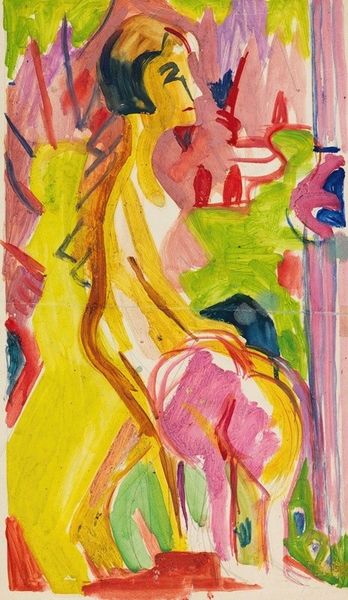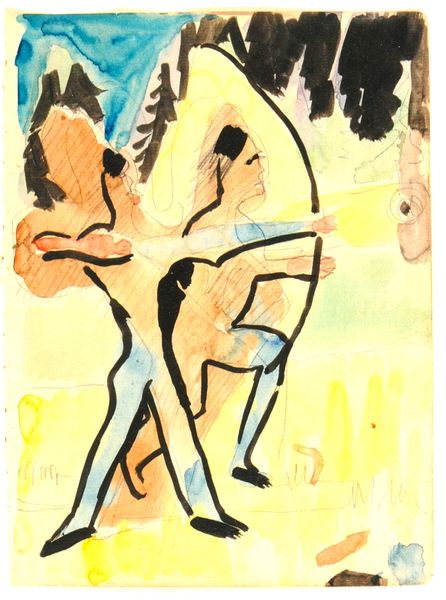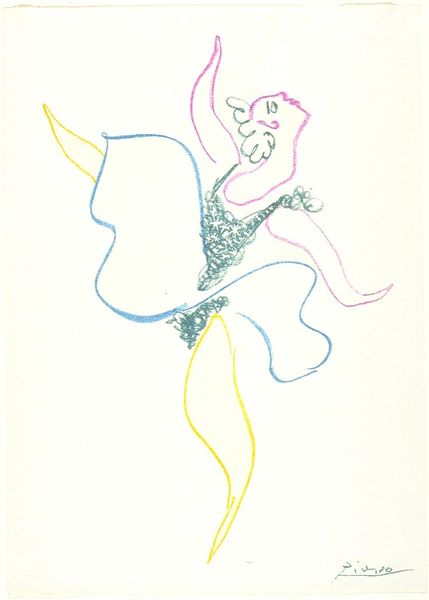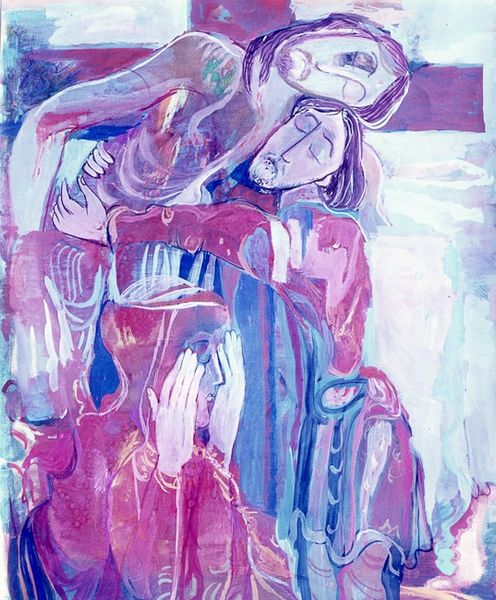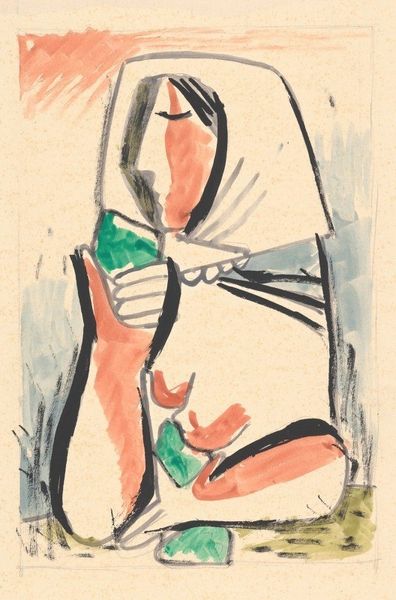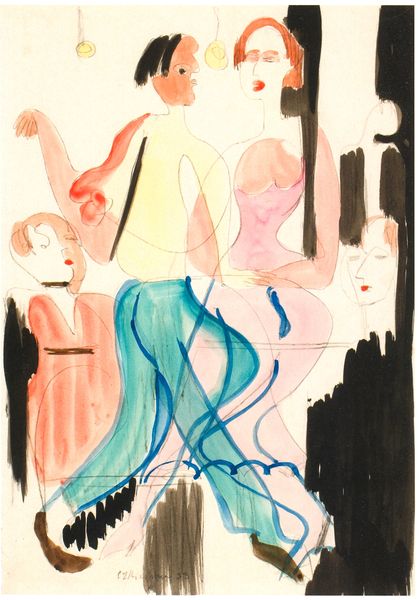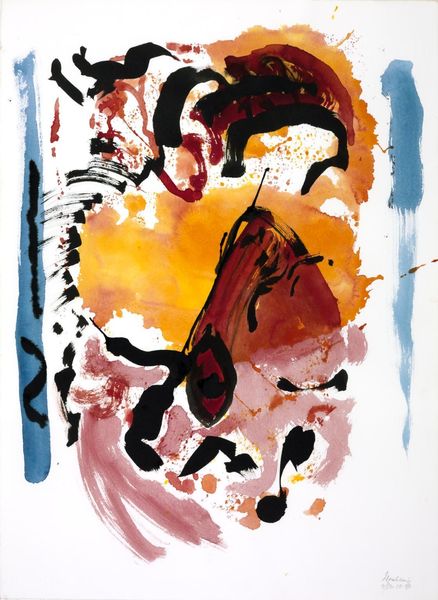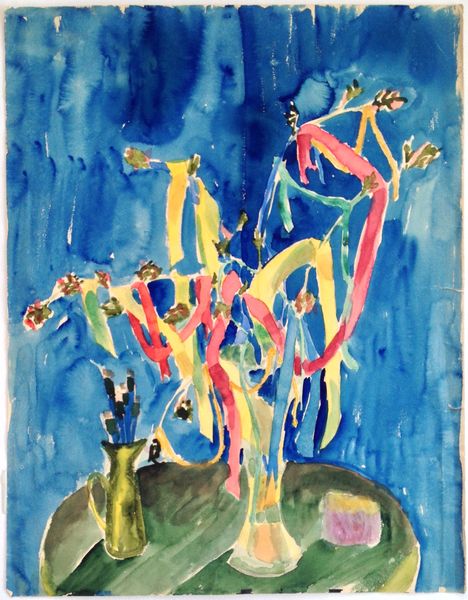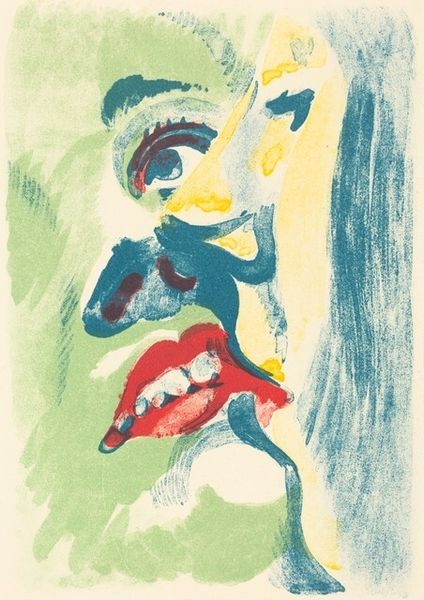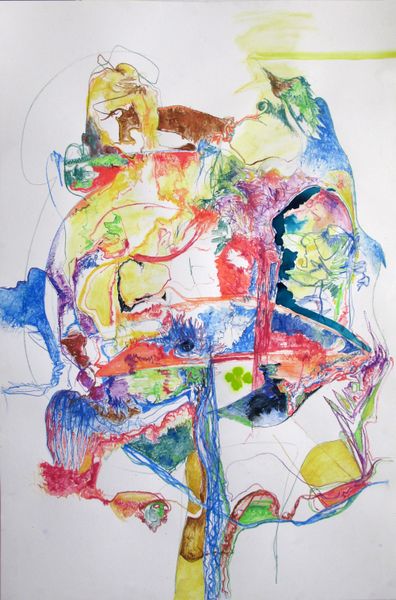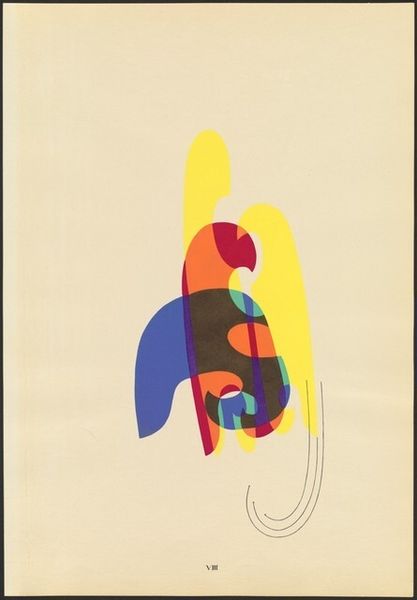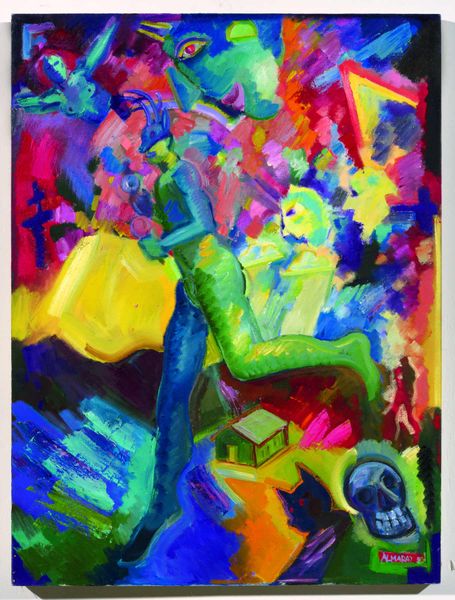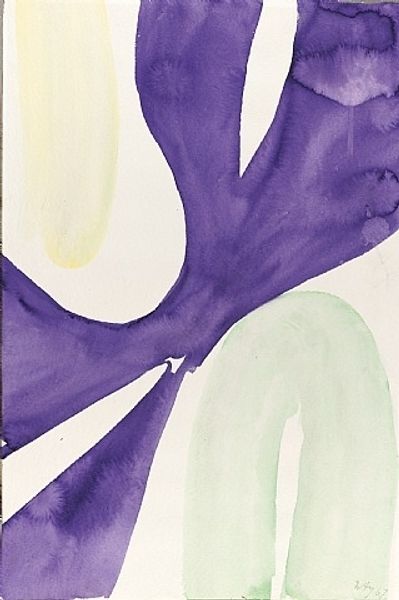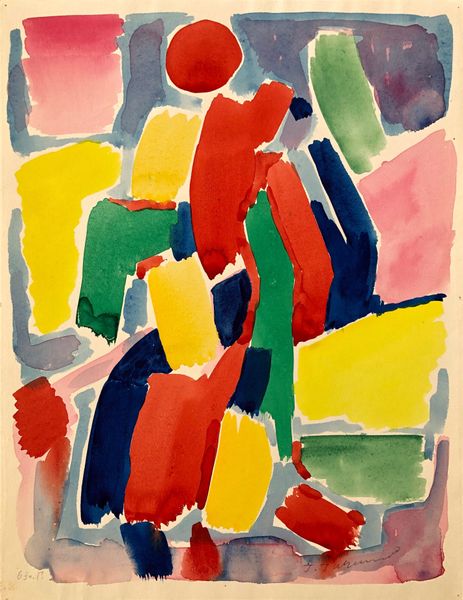
Dimensions: 51 x 35.8 cm
Copyright: Public domain
Curator: Standing before us is Ernst Ludwig Kirchner's watercolor, "Design for the Banquet Hall in Essen," created in 1933. Editor: It has a really optimistic feel, doesn’t it? The bright, somewhat transparent washes of color give it a sense of lightness, despite the heavy linework grounding the figures. Curator: Indeed. Kirchner's use of watercolor allows for a fluid rendering of form, focusing intensely on line and chromatic value. Observe how he employs these elements to create figuration that approaches abstraction, especially in the overlapping figures and use of positive and negative space. Editor: Thinking about the material constraints of watercolor and the process of applying those transparent layers… the paper becomes quite active, right? It's not just a surface but a key element defining the luminous qualities of the hues themselves. The rainbow also reads like an optimistic symbol, at odds with the societal decay of Weimar Germany that was at its apex. Curator: Exactly. Kirchner's expressive approach here is noteworthy. Consider, too, the dynamic tension established by the seemingly carefree figures juxtaposed with the knowledge that the very project was deemed unacceptable during a dark era in German history, the early period of Nazi ascendancy to power. The bright colors and implied motion present a striking contrast. Editor: Given the socio-political environment, I'd assume sourcing good quality paper, pigments, and even a studio space would require great ingenuity and careful handling to work outside the constraints imposed by conservative and nationalistic ideologies that controlled resources, exhibition possibilities, and critical opinions. Curator: Certainly, these factors affect both the artistic execution and subsequent perception. It challenges us to question how formal techniques can simultaneously reflect both personal freedom and historical constraint. Editor: Yes. It allows us to consider what kinds of labour conditions, what degree of privilege, or, conversely, what types of economic pressure and political conflict enable works to be created in the first place. Curator: An essential inquiry, indeed, helping reveal underlying meaning within the pictorial space. Editor: Very good, this reflection changes how I view the role of materiality within Kirchner's larger compositional plan.
Comments
No comments
Be the first to comment and join the conversation on the ultimate creative platform.
